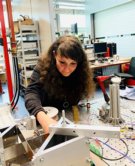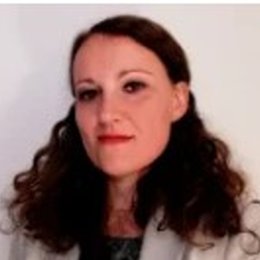In this STAR interview, we speak to Bojana Rosic of the Faculty of Engineering Technology (ET). STAR is an acronym for (S)ituation, (T)asks, (A)ctions, (R)esults. We also have many “star” colleagues at UT with an interesting story to tell. Bojana Rosic works on more sustainable and agile manufacturing practices and systems that requires a unified approach combining multidisciplinary expertise in engineering, physics-based knowledge and data science. 

Situation
What is/was the situation (S) of your research/initiative?
A shift towards more sustainable and agile manufacturing practices and systems requires a unified approach combining multidisciplinary expertise in engineering, physics-based knowledge, and data science. By fusing different skills one can build a digital twin, a virtual replica of a physical asset, process, or system that uses real-time data and simulations to optimize performance, improve process quality and control, and allow informed decision-making. The core expertise of the group Applied Mechanics and Data Analysis (AMDA) is to build the prototype of a digital twin, and thus integrate physics-based predictive modeling of processes and systems, including studying material performance through multiple scales, with observational data collected through monitoring or experiments.
In particular, we study variations in materials, and processes control variables to account for possible inherent randomness and uncertainties or lack of experts knowledge (stochastic physics-based simulations, i.e. predictive modelling). This approach allows for more realistic predictions of material performance and better process control under diverse conditions, leading to the mitigation of potential failures and more reliable control. However, the main challenge is to successfully use data and models that are not described by the same type of error. One should then ask: what is the modeling error, how large is the measurement error, and what kind of theories can be used to fuse them? Once these questions are answered, the main framework of a digital twin solution is sketched. The remaining step is to make such a framework interpretable, explainable and finally implemented in hardware.
Tasks
What tasks (T) were or are you currently working on?
The main task of our team is to generate fundamental knowledge and software that can help both academic and industrial users in the primary steps toward digitalization. Currently, mechanical engineering industries face digitalization challenges as they do not generate the vast amount of data needed to understand variations and optimize their production processes. Therefore, we believe that integrating physics-based knowledge alongside data grounds manufacturing processes and systems in solid scientific principles that engineers can better understand and interpret.
Our goal is to bring both physics and machine/deep learning principles to the same playground, where the latter can be expressed as the former and vice versa. By doing this work, we believe that the production of materials and machines, or even robotics applications can be observed through the same lenses. In this context, we are developing computationally efficient digital phantoms that can substitute for real systems. The main challenge is to merge such a phantom with models describing observed data and expert knowledge. For this, we use machine/deep learning, uncertainty quantification, and reinforcement learning technologies. Since all these technologies are based on the fundamentals of stochastic modeling, our main task is to integrate this theory for various mechanical engineering applications involving nonlinear dynamics (multi-body/structural dynamics) or nonlinear mechanics (stochastic multiscale analysis, stochastic dynamics-based fracture propagation/fatigue). Such software can be further used for design, process, performance optimization, and control purposes.
Actions
What actions (A) are you working on and who are involved?
The current research activities are reflected in various collaborations both nationally and internationally. Much of this collaboration occurs within the ET faculty and Fraunhofer Innovation Platform. Additionally, we are engaged in digitalization projects with major companies like Volkswagen, Tata Steel (Growing with Green Steel), ASML, and others. This enables us to transfer our knowledge to real engineering applications.
Although digitalization brings numerous benefits, such as increased efficiency and productivity, it also poses certain risks. One significant risk is the CO2 footprint of digitalization technologies due to the substantial energy consumption required for training and running large-scale machine learning models. Therefore, our efforts are directed towards building green technologies that self-optimize in terms of energy consumption.
Another risk is the growing skills gap, where the demand for high-tech skills outpaces the supply, leaving many workers unprepared for new job requirements. To address this, we have incorporated training in AI technologies at both the bachelor and master levels, primarily for Mechanical Engineering students. It is essential for them to properly understand these technologies, as they come with many restrictive assumptions that may pose business or safety risks. Mechanical engineers play a crucial role in building AI technologies due to their expert knowledge, which cannot be replaced by pure data scientists. In the future, we also plan to extend our activities to a lifelong learning scheme that will bring AI literacy to engineers who missed such training in the past.
Results
What results (R) do you hope to achieve and how will society (or UT organization) perceive them?
The software that we develop is instrumental in optimizing production processes, enabling predictive maintenance, improving product quality, and enhancing resource efficiency. These advancements are expected to lead to more sustainable practices, rapid innovation, and the ability to offer customized products. For society, the main benefits are focused on environmental sustainability. Our simulations aim to optimize processes in such a way that emissions and waste are reduced, while product reliability is increased. Last but not least, we would like to teach future generations to use the existing technologies reasonably.







